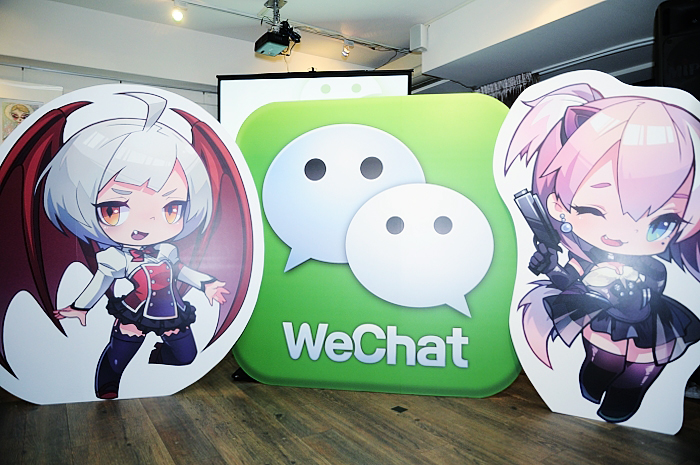by Sarah Fay, November 22, 2016

Earlier this fall, I moderated a panel at the OMMA “Bots & Chat” Conference in New York. The panelists referenced some interesting chatbot marketing examples in the U.S. — particularly one from the chat marketing agency Block Party that used Katy Perry’s cat to help market her perfume.
But it was clear that the use of chatbots is in an early stage of marketing experimentation. Some brands are just starting to dip their toes in the water, while others are merely eyeing the water’s edge.
Of course, the most famous (infamous?) chatbot launched to date in the U.S. is Microsoft’s Tay, which most would view as a failure since she went quickly from making comments such as, “Humans are cool,” to making Neo-Nazi statements — until the developers took her offline one short week after her debut.
What many people don’t realize, noted Block Party’s Eytan Oren during the panel, is that the same algorithm that powered Tay is behind the famously successful chatbot Xiaobing (the latest iteration of its name), which boasts more than 20 million registered users and 850,000 followers on Weibo, the Chinese microblogging site. So Microsoft used the same technology to create the most failed as well as the most successful chatbot in the world. Mike Azzara also touched on this in last week’s post, “Chatbots Rising.”
One might ask, why did the same chatbot fail so miserably in the U.S. while its Asian twin soared? Is it a marketplace issue?
Another one of my panelists, Benji Bourinat from the OOH and digital agency Kinetic, noted massive chatbot usage in China in general. After the conference, he and his colleagues offered more insight on China and why his company’s Chinese division has been inspired to share its knowledge and insight about messaging behaviors and marketing best practices with its U.S. team “China is the messaging economy,” they told me. Chinese platforms such as WeChat can offer marketers much greater results than other forms of digital marketing, because of a built-in eCommerce capability.
WPP’s China CEO, Bessie Lee weighed in, “Whereas more and more Chinese brands are using WeChat as a distribution platform to sell products, most multinational companies are just using the app as a content-marketing tool.” WeChat realizes an average-revenue-per-user (ARPU) of $7 per year while western counterparts, WhatsApp and Messenger have struggled to monetize their services.
In addition, platforms such as WeChat and Baidu are racing forward to incorporate AI features that will enhance user experiences, such as voice recognition, voice search, automatic translation, and face recognition, many of which rival or go a step beyond their US counterparts, Facebook and Google.
In the article “AI and WeChat,” Edward Bell, CEO, FCB Greater China, cites an innovation from WeChat that goes beyond Facebook’s face recognition (which identifies friends’ faces for easier tagging purposes) that captures the users’ imagination: “When you take a selfie and add it to your account, the technology will go and find a celebrity that it thinks you look like and it will send that image to you. It’s not very useful, but like a lot of social media, it’s just fun.”
This capitalizes on Chinese users’ interest in engaging and playing games with cute icons – versus simply using bots for practical time-saving purposes. King Lai, CEO of Kinetic Asia Pacific, points to the “SUPER App” status of platforms such as WeChat, “which incorporates a wide variety of functions (replacing Facebook, WhatsApp, Tinder, Twitter, Instagram, ecommerce and portals.)” This leads to even more of a captive audience than we see in the U.S. with walled gardens such as Facebook.
These advancements have not gone unnoticed by Facebook, and if you want to know about the future shape of Facebook and Messenger, WeChat may provide the best view. In his article “Facebook’s WeChat-ification,” Erik Crouch notes all the ways Facebook’s roadmap mirrors what already exists at WeChat. He says, “Zuck’s dream seems to be to pivot Facebook into an ecommerce powerhouse. According to Facebook’s blog, bots can be used in everything from ecommerce to weather and traffic updates, to shipping notifications.” He goes on to say that Facebook’s version of WeChat will be “more refined,” with a “stronger emphasis on artificial intelligence, using natural language processing.”
The real sea change, says Lai, will be in the way chatbot technology will be used with IoT related applications, which he says will be dominated by locally brewed technology companies such as RoKid, versus Google Home or Amazon Echo. Here is where users become untethered to their devices, and simply interact within their environments: home, office, car, etc.
Given the progress of shorter voice activation processes, and a population that is enthusiastic about bot interaction, U.S. marketers would be smart to pay attention to how all of these platforms are being used to deliver results in China — because when it comes to bot usage and marketing, we are the followers.
MediaPost.com: Search Marketing Daily
(26)